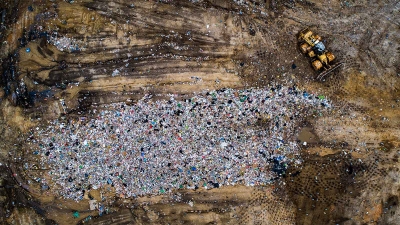
A landfill is a dumping ground for waste materials. It is the systematic disposal of garbage or trash by burying it in the ground. Most modern landfills are designed in a way that they reduce contamination of the nearby groundwater and soil. Nowadays, they are also completely sealed to prevent the methane that is generated by the decomposing waste from diffusing in the environment.
How Do Landfills Work?
Modern landfills are built using a layering system designed to safely isolate waste and monitor any byproducts, leaks and anything else that can harm the environment. Isolating the trash from air and water is vital for preventing contamination.
We can learn more about how landfills work by examining each layer.
Cells (Old and new)
Each day, trash is compacted a cell in order to make the most of the space available in the landfill. The day’s work cell is also known as the daily workface. Here, trash is organized in layers or lifts then compacted accordingly.
Heavy machinery like bulldozers and compaction equipment are used to compress the trash and place it in the landfill. A six inch layer of dirt covers the cell after it’s made and is then compacted once more. This layer helps contain odors and prevent unwanted pests. Some landfills are considering alternatives like tarps or cement emulsions to save space.
The Liner System
The bottom layer of the landfill consists of a liner that keeps trash and byproducts separate from the environment and groundwater. Some facilities use more than one type, but at any landfill you’ll find at least one of the below liners.
Compact clay liners: These liners are normally made of dense, compacted clay solid enough to prevent waste, liquid or gas leaks from seeping into the environment.
Plastic liners: These liners are made of dense plastic and other synthetic materials, normally 30 to 100 mils thick. Plastic liners are typically used in municipal solid waste (MSW) landfills.
The Drainage System
On top of the liner, you’ll find a storm water drainage system that filters out both the liquids produced by trash and the water collected from rain and snow. This layer is important because it separates produced liquids from solid waste. Another drainage system is used to specifically filter out the liquid produced by trash, called leachate, from any rainwater and the rest of the landfill.
Gas Collection System
The gas collection system uses extraction wells and pipes throughout the landfill to carry landfill gas that’s generated when waste decomposes to treatment areas where it is then vented, burned or converted into energy.
Cap
A landfill is permanently capped with a plastic liner when it is full. After it’s capped, the landfill is covered with two feet of soil. Then, vegetation (normally grass and plants without penetrating roots) is planted on top to prevent soil erosion due to rainfall and wind. The landfill is monitored for 30 years to ensure there is no detrimental impact to the environment.
As you can see, today’s landfills are a far cry from the disease-ridden dumps from years before. The industry is also exploring other ways to make landfills cleaner, safer and more environmentally friendly in addition to the processes we’ve already mentioned. See below to learn a few ways landfills are becoming more sustainable.
Credit : Big Rentz
Picture Credit : Google



